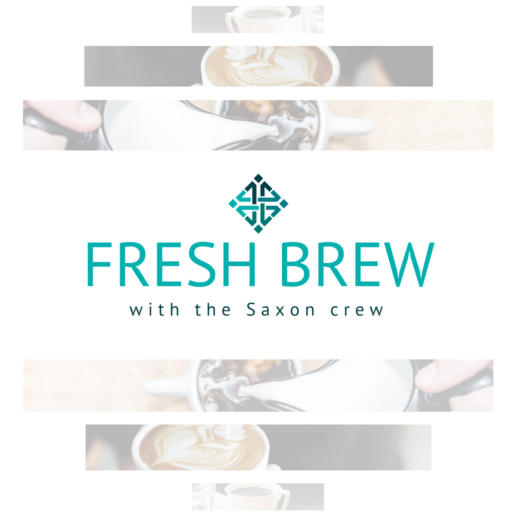How to Leave Work at Work
Bringing work home after a workday is a common factor that disrupts family time, and even causes more mental stress. In order to maintain a work-life balance, it's important to know that there is a way to leave your work life, at work. Read this blog post to learn simple tips on how to keep a healthy balance between work and home-life.
Some jobs have very clear lines between when you’re “on” and when you’re “off,” while in others the lines are blurred — or potentially nonexistent. That makes not being distracted by work, especially mentally, a major challenge.
This can lead to sitting at dinner while your daughter tells a story about her day, but instead of hearing her you’re wondering whether an email from your boss came through. It can mean exchanging the time you could have spent on sleep, exercise, or talking with your spouse glued to your laptop. And it can look like keeping your work life in order, while your finances or home are a mess because you don’t take time to pay bills, plan for retirement, or tidy up.
As I shared in my article on boundaries, what is possible can vary depending on your particular job, work culture, and coworkers. But in most cases, you can reduce how distracted you feel by work during times when you’re not working.
As a time management coach, I’ve found these four steps can help. I encourage you to challenge yourself to gradually implement these changes and see how much you can leave your work at work — both physically and mentally — in 2020.
Step 1: Define “After Hours”
If you have a traditional 9-to-5 job, your hours are set for you. But if you work in an environment with flexible hours, you’ll need to think through when you want to be on and off the clock. If your employer has a certain number of hours that you’re expected to work each week, start by seeing how to fit those hours around your fixed personal commitments, like taking your kids to school or extracurricular activities, making a certain train, or attending an exercise class you really enjoy. When do you need to start and stop to put in the proper work time?
On the other hand, if your company doesn’t have a specific amount of time that you need to work — say, you freelance or have a results-only work environment — but your job still takes over almost all of your waking hours, take the reverse approach. Think through how many hours you want for activities like sleep, exercise, family, friends, cleaning, finances, etc. Then see how much time you need to reserve on a daily and weekly basis to fit in those personal priorities. That then defines the parameters of when you want to be “off hours.”
Step 2: Have Mental Clarity
Next, make sure you have mental clarity on what needs to get done and when you will complete it. This includes having a place where you write down the many tasks that you need to do, whether that’s in a notebook, a task management app, a project management system, or in your calendar. The important point is that you’re not lying in bed at night trying to remember everything on your mental to-do list.
Then once you have this list, plan out your work. That could mean setting aside time in your schedule to work on a report in advance, putting time in your calendar to prep for your next day’s meetings, or just plotting out specific hours that you will reserve for getting your own work done versus attending meetings or responding to other people’s requests. This planning reduces anxiety that something will fall through the cracks or that you’ll miss a deadline.
The final part of increasing your mental clarity is to have an end-of-workday wrap-up. During this time, look over your daily to-do list and calendar to make sure that everything that absolutely must get done — specifically, those tasks that had a hard deadline — were completed. You also can do a quick scan of your email to ensure any urgent messages are attended to before you leave the office. For some people, it works well to do this as the last thing they do that day, say 15 to 30 minutes before heading out. For others, it’s better to put a reminder in their calendars for an hour or two before they need to leave. This gives them a more generous time period to wrap items up.
Step 3: Communicate with Your Colleagues
In some job situations, you can set a definite after-hours boundary like, after 6 pm, I’m offline. But in other situations, the lines are much blurrier.
For those in situations where you can have a clear dividing line between work and home, I would encourage you to directly communicate that with your colleagues. For example, you might say, “I typically leave work at 6 pm, so if you contact me after that time, you can expect to hear back from me sometime after 9 am the next business day.” Or in some cases your actions can simply set that tone. If they never hear from you between 6 pm and 9 am, that will set the expectation that you’re not available.
But for others, who have jobs that require more constant connectivity, you may want to set some guidelines to control how people reach you, thereby reducing unwanted interruptions. For example, you could say, “It’s fine to text me during the day with questions, but after 6 pm, please send me an email instead of a text unless the situation is truly urgent.” Similarly, if you have a very flexible schedule where you take extended breaks during the day for things like going to the gym or picking your kids up after school, encourage people to reach out to you in specific, preferred ways that you establish. For instance, “There are some times during the day when I may be away from my computer. If you need a fast response, call or text me.” In these scenarios, you’ll know that only the most important work will take you away from your personal or family obligations via an urgent call or text, and you can turn your attention to non-urgent work once you have the bandwidth.
Step 4: Get Work Done at Work
It may seem crazy to say this, but I want to encourage you to give yourself permission to do work at work. For many, they perceive “real work” as something they reserve for post-5 or 6 pm, after everyone else has left the office or for after they’ve tucked their kids in bed for the night. People have this mindset because this time can seem like the few precious hours where no one is dropping by your office or asking you for anything immediately. But if you want to stop feeling distracted by work after hours, you need to actually do your work during the day.
Completing the actions under the mental clarity step will take you a long way forward in that process. Really guard your time. Put in time for project work. Place time in your calendar to answer email. And if follow-through requires going to a place other than your office to work, do it. Make and keep meetings with yourself to knock off tasks. It’s exceptionally difficult — if not impossible — to not be distracted about work when you’re stressed out because you haven’t gotten your work done.
And if you must (or want to) do some work outside of your standard day, make sure that you timebox it. For example, I will work from 8-9 pm tonight then stop. Or, I’ll put in three hours on Saturday from 1-4 pm, but then I won’t think about work before or after. It’s much better to designate a time and stick with it than it is to think about work all night or all weekend and do nothing.
As individuals, we need a mental break to do our best work, and taking time for ourselves — without the distraction of work — can help us become our best selves. I can’t guarantee that thoughts about work will never cross your mind, but with these four steps, you can reduce how much you’re distracted by work after hours.
SOURCE: Saunders, E. (03 February 2020) "How to Leave Work at Work" (Web Blog Post). Retrieved from https://hbr.org/2020/02/how-to-leave-work-at-work
Marijuana and the Workplace: What’s New for 2020?
With various states legalizing the medical use and recreational use of marijuana, employers are starting to question the exceptions regarding drug-testing and the marijuana laws towards new hires and current employees. Though there are several questions and concerns being raised, this may become a new trend throughout different states. Read this blog post to learn more about what employers are doing with new state laws.
Employers have been grappling with confusing marijuana laws for years—and the rules are getting tougher to navigate as more states add employment protections.
Kathryn Russo, an attorney with Jackson Lewis in Melville, N.Y., feels that there are so many new developments with drug-testing and marijuana laws, it's hard for employers to keep up. Starting in 2020, some locations will prohibit employers from screening new hires for marijuana or refusing to hire applicants based on a failed pre-employment marijuana screen—though there are exceptions for safety-sensitive positions. This may be the new trend, Russo said.
Here's what employers need to know about the changing landscape for weed and the workplace in the year ahead.
Legalizing Recreational Use
Although all marijuana use is still illegal under federal law, at least 33 states allow medical use, and 11 of those states and Washington, D.C., also allow recreational use.
On Jan. 1, Illinois became the 11th state to legalize recreational marijuana use, and employers are still figuring out what the new law means for the workplace.
"When the act was initially passed, employers expressed concern that they might have to prove an employee was under the influence of cannabis when an employee failed a drug test," said Jennifer Colvin and Michael Furlong, attorneys with Ogletree Deakins in Chicago. "Employers also expressed concern regarding whether they could conduct random drug tests."
So Illinois lawmakers approved an amendment clarifying that employers can conduct reasonable drug and alcohol tests, including random tests, and may discipline, fire or refuse to hire a worker who fails.
"Despite this employer-friendly amendment, workplace drug policies still must be both reasonable and nondiscriminatory," Colvin and Furlong said. Notably, the amendment didn't define a "reasonable" policy.
More states are expected to approve—or attempt to approve—recreational cannabis use in 2020. New York Gov. Andrew Cuomo said he's making it a priority.
"This year, let's work with our neighbors New Jersey, Connecticut and Pennsylvania to coordinate a safe and fair system, and let's legalize adult use of marijuana," he said in his 2020 State of the State address on Jan. 8.
Limiting Pre-Employment Drug Screens
Another big trend that's taking shape in 2020 involves limits on pre-employment marijuana screening. On Jan. 1, a Nevada law took effect barring employers from considering a pre-employment marijuana test result, and beginning May 10, a New York City law will prohibit employers from conducting pre-employment marijuana tests. Both laws have exceptions for safety-sensitive positions and jobs regulated by federal programs that require drug testing.
Even states that allow employers to refuse to hire job applicants who fail drug tests may require employers to take specific steps before rescinding a conditional job offer.
Some states have laws prohibiting employers from discriminating against workers who use lawful products while they're off duty. Such laws were enacted to protect tobacco users from discrimination, said Jennifer Mora, an attorney with Seyfarth Shaw in Los Angeles, but whether those laws protect off-duty use of a product that remains illegal under federal law is questionable.
Protection for Registered Medical Patients
More states are also passing laws that prohibit employers from discriminating against employees because they are authorized medical-marijuana patients or caregivers of patients.
"In those states, employers may be required to engage in the interactive process to accommodate the use of medicinal marijuana off duty," said Anne-Marie Welch, an attorney with Clark Hill in Birmingham, Mich.
A reasonable accommodation may not be available for a given job, but employers should make a good-faith effort to find one, such as granting time off or altering shifts while the worker is medicated.
Employers should note that they don't have to accommodate on-the-job use or intoxication, even in states where they can't fire or refuse to hire a worker simply for being a registered medical-marijuana user.
But determining how to proceed if an employee has used medical marijuana varies by state, explained David Morrison, an attorney with Goldberg Kohn in Chicago. For instance, in Arkansas, employers may discharge employees based on a good-faith belief that the employee was impaired by medical marijuana on company property or during work hours, but a positive drug test alone is not sufficient grounds for a good-faith belief. The employer also needs to observe something in the worker's conduct, behavior or appearance that indicates intoxication or receive information from a reliable person about the worker's impairment. A positive drug test, however, may be sufficient to bar an employee from working in safety-sensitive positions, Morrison noted.
Alaska, Arizona, Delaware and Minnesota state laws also prohibit employment discrimination against qualified medical-marijuana users.
In contrast, employers in some states, such as California, Colorado, Michigan, Montana, Ohio and Oregon can fire employees who test positive for marijuana, even if the use was off-duty and for a medical condition.
"While many states address these issues in their statutes, state courts also have weighed in," Morrison said. In New Jersey, an employer did not have to waive a post-accident drug test for an employee who was a registered medical-marijuana user.
Although marijuana use is not covered by the federal Americans with Disabilities Act, employees may be able to bring state-law discrimination claims. Courts in Massachusetts and Rhode Island, for example, have allowed such claims in recent years, though older court decisions in California and Colorado dismissed state-law claims as pre-empted by federal laws prohibiting marijuana use.
Consider the Job and Business
So what should employers do in light of these differing laws? "You have to consider the needs of the business, in addition to any applicable state laws," Welch said. Federal contractors, drivers and workers in other safety-sensitive positions may be subject to drug-free workplace laws, whereas general office workers may not. Employers that are struggling to fill vacant positions might want to relax their standards.
"More and more employers appear to be treating marijuana use like alcohol use and allowing recreational off-duty use," Welch observed.
SOURCE: Piazza-Nagele, L. (17 January 2020) "Marijuana and the Workplace: What’s New for 2020?" (Web Blog Post). Retrieved from https://www.shrm.org/ResourcesAndTools/legal-and-compliance/state-and-local-updates/Pages/Marijuana-and-the-Workplace-New-for-2020.aspx
Beware the Legal Pitfalls of Managing Unpaid Interns
With many college students and recent graduates trying to start a career, their first step to getting introduced to what their degree can hold for them is working as an intern to learn different roles and to learn how a business operates. The U.S. Department of Labor (DOL) has raised concerns regarding what makes an intern an "employee" or a "trainee". Read this blog post to learn more about the guidelines that pertain to bringing an intern or a "trainee" into the workplace.
A college student or recent graduate is eager to make an impression. So is the early-in-career professional who’s been laid off by another company. You placed them both in an unpaid internship program because you want to give your company a chance to evaluate them as future employees. What could go wrong?
At job sites across the United States, interns not paid or earning less than minimum wage are given all sorts of jobs: answering phones, loading paper in the copiers, managing company social media campaigns.
But, federal guidelines released by the U.S. Department of Labor (DOL) in April 2010 raise concerns that employers might decide to provide fewer internship opportunities. The guidelines, which apply to “for-profit” private-sector employers, define what makes an intern an “employee” as opposed to a “trainee.” If a court or government agency decides that interns’ work qualifies them as employees, the company could face penalties that include owing back pay; taxes not withheld; Social Security; unemployment benefits; interest; attorneys’ fees; plus liquidated damages, defined by federal law as double the unpaid wages.
Six Standards
The DOL’s Wage and Hour Division lists six factors to use in determining whether an intern is a trainee or an employee under the Fair Labor Standards Act (FLSA).
- The training, even though it includes actual operation of the facilities of the employer, is similar to what would be given in a vocational school or other educational institution.
- The training is for the benefit of the trainees.
- The trainees do not displace regular employees, but instead work under their close observation.
- The employer that provides the training derives no immediate advantage from the activities of the trainees, and on occasion the employer’s operations may actually be impeded.
- The trainees are not necessarily entitled to a job at the conclusion of the training period.
- The employer and the trainees understand that the trainees are not entitled to wages for the time spent in training.
If all of the factors listed above are met, then the worker is a “trainee,” an employment relationship does not exist under the FLSA, and the act’s minimum wage and overtime provisions do not apply to the worker.
Federal and state labor departments are cracking down on unpaid internships “due to a concern that paid jobs are being displaced and to increase payroll tax revenues,” says employment lawyer Terence P. McCourt of Greenberg Traurig in Boston.
With so much at stake, it’s a good time for HR professionals to review their companies’ internship policies to ensure that they are in compliance with government requirements.
Legal Exposure
The DOL standards state that most nonexempt individuals “suffered or permitted” to work must be compensated for the services they perform for an employer unless certain conditions are met. In general:
- The internship program must be similar to training that would be given in an educational environment, such as a college, university or trade school.
- The intern and the employer must both understand that the intern is not entitled to wages.
- The company must receive no immediate advantage from the internship and in fact may find its operations disrupted by the training effort.
- The intern must not take the job of regular employees.
Unpaid Programs on the Rise
Despite the risks, unpaid internships appear to be on the rise. In a May 2010 survey by Internships.com, an online clearinghouse for companies and would-be interns, two-thirds of the more than 300 college and university career center professionals who responded said that overall internship postings on their campuses increased from 2009 to 2010. However, more campuses reported lower numbers of paid internships than those reporting increases.
“Unpaid internships do appear to be on the rise,” says attorney James M. Coleman of the labor and employment law firm Constangy, Brooks & Smith LLP in Fairfax, Va. Whether the rise is in “reaction to the difficult economy and an effort to save on labor costs is not completely clear.”
Companies can protect themselves by having the college intern ask his professor for academic credit for the internship. Employers should coordinate with an intern’s school to determine requirements mandated by the educational institution, experts say.
An internship is more likely to be viewed as training if it provides interns with skills that can be used in multiple settings, as opposed to skills that are specific to one employer’s work environment.
Interns should be “allowed to observe aspects of the employer’s operations, such as job shadowing, without needing to perform services at all times,” McCourt says. He adds that an intern should not supervise regular employees or other interns, and the company should define the arrangement clearly and in writing, specifying that there is no expectation of a job offer at the conclusion of the internship.
HR professionals and lawyers say it may be useful for companies to keep written records of what an intern expects to gain from an unpaid program. Attorney Oscar Michelen of Sandback & Michelen in New York City suggests preserving memos, e-mails and other documentation covering what each intern does, such as attending scheduled training sessions and luncheon meetings with regular employees, and what type of training and supervision will be provided.
SOURCE: Taylor, S. (17 January 2020). "Beware the Legal Pitfalls of Managing Unpaid Interns" (Web Blog Post). Retrieved from https://www.shrm.org/hr-today/news/hr-news/pages/managingunpaidinterns.aspx
The Post-Holiday Funk Is Real
Getting out of the post-holiday funk is a difficult task in itself. After a holiday season filled with parties, breaks, food and time off, it can be hard to snap back into work mode. Here are a few things you can do to get out of that holiday funk:
Somewhere around the third week in December work in many offices starts to slow down. There are holiday parties. Customers and clients may be harder to reach. Energy and motivation wanes. And many of us sign off from work completely to spend the holidays with friends and family.
And then January arrives, and it’s time to get back in the swing of things. But, after being out for a week or two, it can be hard to snap back into work mode. If you’re feeling sluggish and unmotivated, you’re not alone. There are several reasons for this kind of the post-holiday funk — and, fortunately, there are things you can do to get out of it as well.
Focus forward
It’s common around New Year’s Day to look back at the past year. Research on construal-level theory suggests that the more distant you are from anything in time, space, or socially, the more abstractly you think about it. Getting out of the office and looking at the whole year leads you to think about your contribution and not just the tasks you did. This is natural and healthy. After all, your contribution in the last year was not the 16,471 emails you sent, but rather the relationships you solidified, the projects you oversaw, and the collaborations you continued as a result of those emails.
But while you’re likely to be proud of some things you accomplished, you may also be thinking about some of your failures. These are often the source of many people’s New Year’s resolutions.
Of course, noticing last year’s failures can be disheartening. And around the new year, you may end up in a cycle of thoughts about what you could have done differently in the past. This kind of rumination can actually heighten feelings of depression and anxiety, which sap your motivation.
When you get back to work, it’s important to start looking forward to the new year rather than back on the past one. Treat the goals you want to accomplish as new challenges and a source of energy not a penance for things you didn’t get done last year. Focusing on the future — and seeing new opportunities to succeed — can help you to generate the energy to get started.
Get specific
Your reflections on the past year might also lead you to commit to making changes. This is a good thing but not if your commitments are abstract, like “be more productive,” “get a new job,” or “become a better leader.”
In fact, these abstract goals can be paralyzing. They’re simply too big to make meaningful progress toward. Instead, turn your goal into specific actions that when added up lead to the desired outcome. This kind of specific plan is called an implementation intention. It requires that you break the general goal down into tasks that can be put on your calendar.
This specificity has two benefits.
First, it requires you to think through what actually has to be done to achieve the goal. You may discover that you don’t know all the steps or that some of the steps are ones that involve skills you need to learn. In that case, you might want to find a mentor or coach who can help you.
Second, being specific forces you to grapple with your densely packed schedule. One reason why people often fail to achieve important goals is that they cannot find the time to perform the tasks that would lead to success. When you try to add new actions to your agenda, you are forced to figure out what can be moved, delayed, or delegated in order to put you on the road to following through on your commitment.
Make the right social comparisons
A third possible source of post-holiday funk is social comparison.
Humans don’t evaluate things on an absolute scale. Instead, we assess our success relative to some standard. Often, we do that through the process of social comparison, in which we compare ourselves to someone else.
There are two kinds of social comparisons. Upward social comparisons involve comparing yourself to someone better off than you are along a particular dimension. For example, you might see a high-school friend who just got a promotion, or a college friend who just bought a car that you dream of owning some day. These comparisons tend to make you feel bad about yourself, because they highlight what other people have that you don’t, whether it’s money, social standing, or particular relationships. Downward social comparisons are comparisons to someone worse off than you. These comparisons generally make you feel good about yourself and your situation.
Unfortunately, both kinds of comparison can sap your motivation. Upward social comparisons can frustrate you, knowing that other people you know are more successful, happier, or wealthier than you are. Because of the way people curate their social media, if you just look at where people are taking vacations or what they post about their jobs, it’s easy to believe that most people are doing better than you are, which may lead you to feel like giving up.
When you make downward social comparisons, you feel better about what you have and what you have accomplished, but you aren’t motivated to continue pushing forward. Instead, it makes you satisfied with where you are and, often, complacent. The energy you need to motivate yourself comes from being dissatisfied with something about the present, along with developing a plan to get what you want.
You can’t stop yourself from making social comparisons, but you can explicitly manage those comparisons to motivate you. For example, you can find a close rival — someone who is doing slightly better than you are along some dimension, but whose performance is close enough to your own that you can see how you could take some actions to reach their level.
You can also make social comparisons to your past self. Take a look at your trajectory. Recognize that even if you haven’t achieved all of your goals, you have improved over time. Use that recognition of your own growth to spur you to keep working to reach new heights.
No one wants to start the year off in a rut. And yet many of us begin January too focused on the past and feeling bad about what we have yet to accomplish. With some small changes in your perspective, though, you can hit the ground running in the new year.
SOURCE: Markman, A. (03 January 2020) "The Post-Holiday Funk Is Real" (Web Blog Post). Retrieved from https://hbr.org/2020/01/the-post-holiday-funk-is-real?ab=hero-subleft-3
Are You Pushing Yourself Too Hard at Work?
Different seasons can bring in long hours, extensive work, and multiple deadlines that require a lot of attention. Are you pushing yourself too hard? It is important to know the difference between a temporary work crunch and an everyday "norm". Read this blog post for a few key signs of pushing too hard at work.
We all have intense periods at work where multiple deadlines converge, an important deal is closing, or a busy season lasts for a few months. During these times, we may work more intensely or longer hours, but we know that the situation is temporary, and we are able to keep work in perspective. Conversely, approximately 10% of Americans are considered workaholics, defined as having a “stable tendency to compulsively and excessively work.” Whether you are in the midst of a temporary work crunch, or if working all the time is your version of “normal,” there are some key signs that you are pushing yourself too hard. These include:
You aren’t taking time off. Consistently putting off vacations (including working over major holidays), regularly working all weekend, or dismissing the idea of an occasional day off is a sign that you are burning the candle from both ends. While only 23% of Americans take their full vacation time allotted, studies of elite athletes show that rest periods are precisely what helps them to perform at full throttle when needed, and the same is true for the rest of us. While extended vacations are helpful, smaller breaks, such as taking the weekend to recharge, carving out personal time in the evening, or having an occasional day off can also be an important part of having sufficient downtime to restore your energy and counter the drain of being “always on.”
You deprioritize personal relationships. When we focus exclusively on work for extended periods, it often comes at the expense of our personal relationships. During 2018, 76% of US workers said that workplace stress affected their personal relationships, with workaholics being twice as likely to get divorced. Not taking time to connect with friends and family can also be detrimental to our health. Research shows that strong social relationships are positively correlated to lifespan and that a lack of social relationships has the same effect as smoking 15 cigarettes a day. If you are not taking time outside of work to connect socially with others and have become increasingly isolated, such that social invitations have dried up because others assume you are not available, chances are you are too focused on work.
You’re unable to be fully present outside of work. Another sign you are pushing yourself too hard is that when you do leave the office and take time to be with the people you care about, you are not able to mentally turn work off and be present with them. In 2017, 66% of Americans reported working while on vacation. Jeff, a former client of mine who is a senior partner at his law firm, has never gone on vacation without his laptop. In addition, after making a point to spend time on the weekends to connect with his daughter, he confessed to constantly thinking about work and admitted that he couldn’t help but compulsively check email on his phone every few minutes. While it’s normal to think about work periodically, it becomes a problem when we’re not able to manage our urge to give into work-related distractions, slowly eroding our most important relationships. In his book, Indistractable, author Nir Eyal points out that these distractions make the people we care about “residual beneficiaries” of our attention, meaning they get what is left over, which typically not very much.
You’re neglecting personal care. This is not the occasional skipping a shower when working from home in your sweatpants. Failing to get sufficient sleep, missing meals or existing on a diet of coffee and energy bars, or abandoning exercise or personal hygiene for extended periods are all indications that you are in an unhealthy pattern of behavior. In particular, when we sacrifice sleep for work, we are effectively working against ourselves, as sleep deprivation is shown to impair higher-level cognitive functions including judgment, critical thinking, decision making, and organization. Likewise, skipping exercise puts us at a further disadvantage. Exercise has been shown to lower stress, improve mood and energy levels, and enhance cognitive function, such as memory, concentration, learning, mental stamina, and creativity. As a former investment banker who worked 80- to 100-hour weeks during more intense periods, taking breaks to exercise, eat, and even nap in one of the sleeping rooms provided onsite was critical to maintaining my health, stamina, and productivity.
You see your value as a person completely defined by work. Failure to see a broader perspective, both in terms of how you see your value as a person as well as how you see the importance of work relative to the rest of your life, can be a sign that you are pushing yourself too hard. This myopia is usually driven by deeply held limiting beliefs that create a contracted worldview. Elisa, the head of engineering at a tech company, pushed herself and her team incredibly hard. Her behavior was driven by a belief that “My value is what I produce.” To broaden her perspective, she asked others she respected about what they valued about her, as well as how they valued themselves. She was able to see not only that people valued her for other things like being a good friend, parent, or thought partner, but also that they defined their own value more broadly than their work. Sometimes, it takes a big life event, like the birth of a child or the death of a colleague or loved one, to shake someone out of this restricted perspective. Another way to broaden your perspective in the absence of these events is to have interests outside of work, which can be a good reminder that work isn’t everything.
While we all need to shift into high gear from time to time, keeping work in perspective with the rest of our lives, and taking care of ourselves and our relationships are key to achieving long-term success, both personally and professionally.
SOURCE: Zucker, R. (03 January 2020) "Are You Pushing Yourself Too Hard at Work?" (Web Blog Post). Retrieved from https://hbr.org/2020/01/are-you-pushing-yourself-too-hard-at-work
Managing the Social Butterfly in Your Office
Enjoying the work environment is important, but too much play and not enough work can cause conflict, distraction, and dissatisfaction. Research from the platform Udemy discovered that most employees like to work without distractions from their peers. Read this blog to learn how to manage the social butterfly in your workplace.
Although they might pretend to enjoy playing foosball, catching up on TV shows, and socializing in the office, most employees would prefer to just do their work without distractions, and keep their private lives private, according to new research from online learning platform Udemy. And it’s not just the “older” folks at the office. Udemy’s findings show that this wish is consistent among baby boomers, Gen X, millennials, and Gen Z alike.
So why aren’t more offices heads down and focused on work, if that’s what most of us want? The research shows that the more social minority tends to set the overall tone in the workplace. This difference in work style can cause interpersonal conflict, employee distraction, and dissatisfaction. While that might not sound like a big deal, unhappy, actively disengaged workers cost U.S. companies up to $550 billion per year.
Why we have trouble setting boundaries
Business leaders today are struggling to set boundaries for “appropriate” workplace behavior. Behavior that has traditionally been viewed as unprofessional — such as hugging, sharing deeply personal information, and using profanity — has become much more common.
Part of the problem is that managers often wrongly assume employees “just know” how to interact with each other at work. They don’t. This is partially due to changing employment trends, such as a decrease in entry-level positions, and fewer teens working summer jobs, which has resulted in less familiarity with workplace norms. Also, that old scapegoat, social media — and business messaging apps that mimic social media — may contribute to a perception that more informal communication styles are also OK at work. (Just do an internet search for “Slack etiquette”; the abundance of articles about how to communicate professionally indicate that this is a common challenge.)
Another factor contributing to why we have trouble with boundaries is a lack of self-awareness; that is, understanding how we come across to others. In fact, research shows that although 95% of people think they’re self-aware, only 10-15% actually are. When we’re not self-aware, we don’t realize that what we do, such as hanging around someone’s cubicle to chat, or using profanity, bothers or distracts others.
Despite this confluence of factors, many managers aren’t proactive about putting guidelines in place to set expectations of how employees should interact in a professional way. When there’s no clearly communicated norm about what constitutes “professional behavior” in the workplace — even if those norms are culturally or company specific — it’s difficult to call out if someone has crossed it.
Best practices for managing behavior and minimizing distractions
Defining which social behaviors are “too social” or distracting at work is not an exact science, and the right balance will be different in every workplace. However, in general, the Udemy survey found two distinct groups — across generations — with opinions around which behaviors were appropriate for the workplace. “Social butterfly” personalities were more likely to rate social behaviors, such as hugging, casual communication style, and gossiping more appropriate for work. “Worker bee” personalities, on the other hand, rated these same behaviors as less appropriate.
So how can a manager help the social and less social (at least at the office) work better together? Here are five best practices managers can implement to support change and open communication about expectations for interaction — and fewer distractions — at work.
Emphasize positive intent when giving feedback. When feedback is about something personal, like work style, rather than specific to task and performance outcomes, it can cause feelings of social rejection. Because most of us shy away from causing emotional distress in others, giving this sort of feedback is hard. A lens of “positive intent” can help you more positively frame feedback, for example to an employee who is extremely chatty, if you assume they are just behaving in a way that is natural for them, feels “right” to them, and is not intentionally trying to bother others. You might say something like: “I would like to give you some feedback about your communication style at work. You stop by my desk several times a day to talk to me about non-work topics, and it’s hard for me to stay focused on my work when you do that. To be clear, I feel confident that you’re not trying to bother me intentionally, and that you want to be friendly and inclusive. Did I get that right?”
Own the awkward. One way to initiate a discussion with employees about behavior that causes distraction or distress is to simply admit feeling uncomfortable: “This feels uncomfortable, but I wanted to talk about something that’s been on my mind and may not be on your radar.” Since you’re about to make the other person feel vulnerable, it can be effective to be a bit vulnerable yourself; for example: “It might sound silly to say ‘don’t hug me,’ but hugging my colleagues makes me uncomfortable — and affects my ability to maintain professional boundaries.”
Be specific. It’s important to articulate specifically and neutrally what the other person is doing that is affecting you or another member of the team. “You’re being too friendly at work” is an interpretation of behavior, not a behavior itself. Instead, try the more neutral: “I notice that on Mondays, you come into my office to tell me about your weekend without asking if I have a few minutes to chat. I’m usually trying to catch up on time-sensitive emails at that time. Would you be willing to ask if I have a few minutes free? I’d like to be able to give you my full attention — or let you know when I can give it to you.”
Encourage your employees to give each other feedback. The most effective way to change behavior is through feedback. However, most of us aren’t naturally great at giving or receiving it, so managers should practice and encourage a culture of regular feedback. Peer-to-peer feedback can be particularly impactful; research shows it can boost employee performance by as much as 14%. Furthermore, it’s a manager’s job to encourage employees to speak up to one another instead of complaining behind closed doors. And, managers should make an effort to recognize and reward those who give feedback well and consistently, as well as those who take the feedback without defensiveness.
Offer training. As mentioned above, more employees are coming on the job with little awareness about workplace norms around professional behavior. In addition, Gallup reports that only about 20% of managers have even basic people management skills. Fortunately, this soft skills gap can be filled with training in areas such as conflict management, effective communication, and emotional intelligence. To put training in place, incorporate specific trainings as part of new hire onboarding, and offer training courses as part of the performance evaluation outcomes for improvement.
Differences in work style can result in unwelcome distractions in the office. However, by supporting a culture of regular feedback, having brave, candid conversations, and providing training, the workplace can be more comfortable for everyone.
SOURCE: Riegel, D. (17 December 2019) "Managing the Social Butterfly in Your Office" (Web Blog Post). Retrieved from https://hbr.org/2019/12/managing-the-social-butterfly-in-your-office
Fresh Brew with Scott Langhorne
Welcome to Fresh Brew, where we explore the delicious coffees, teas, and snacks of some of our employees! You can look forward to our Fresh Brew blog post on the first Friday of every month.
“Pay close attention to detail.”
Scott Langhorne is an Account Manager at Saxon.
Scott joined the team at Saxon Financial Services after working in customer service. His favorite catchphrase, a quote from the movie Friday Night Lights, is, “Clear eyes, full heart, can’t lose.”
Scott enjoys helping out his family and friends with any projects they need doing. He also enjoys traveling with his wife. His most memorable trip was when they traveled to Switzerland and Portugal.
In his free time, Scott enjoys playing golf during the warmer months. He also enjoys spending time with his wife and their dog, Bosley.


Bud Light
Scott enjoys drinking Bud Light. His favorite local spot to grab is favorite brew is wherever friends and family are.

Wings
Scott’s favorite snack to accompany his favorite brew are wings.
How to Motivate Your Team During Crunch Time
Keeping teams excited and enthusiastic during busy times of the year is a struggle that most HR departments and employers experience. Whether it's a nearing deadline or seasonal ends, it's important to make sure that teams stay motivated. Read this blog to learn how to keep motivation within teams.
There are times when work ramps up and you need all hands on deck. Ideally, you want people to jump into the work excited and enthusiastic rather than dreading what’s coming. So, what can you do to rally the troops when the team’s workload is particularly heavy? How do you talk about the project or time period so that people don’t feel daunted? And, how do you keep an eye on stress levels while still motivating people to get through the crunch?
What the Experts Say
Whether it’s a seasonal crunch time or a particularly demanding project with a tight deadline, it can be hard to keep people focused and motivated when they’re overloaded. The fact is, “most people already have a lot on their plate,” says Lisa Lai, a business advisor and coach. And so when you ask your team for more, “it can leave people feeling overwhelmed and inadequate.” On top of this, as the pace of work increases and our always-on technology serves as a tether to the office, intense periods are becoming more prevalent, says Ethan Bernstein, a professor of leadership and organizational behavior at Harvard Business School. “There is a greater quantity of crunch times and more of the work that we get done happens during a crunch,” he says. This has critical implications for you, the boss. By “focusing your attention on your employees” and projecting a calm, confident presence, you can make these times easier for the people on your team, Bernstein says. Here’s how.
Project positive energy
For starters, says Lai, “check your own emotional energy as a manager.” If you’re feeling beleaguered, worried, anxious, or frustrated about a project “there’s no way you can show up in front of your team” and be a confident guiding force. To lead, you need to be “engaged, motivated” and “emotionally bought in.” Start by “reflecting on why the work matters.” Figure out “why this project is relevant and who benefits from it,” she says. Remember, too, that crunch times can be useful learning opportunities. Yes, critical, time-sensitive projects are often tense, but “you want peaks and valleys,” says Bernstein. “Peaks — when everyone is engaged and motivated at the same time — are good” for team morale and drive. But they should not be the status quo. “There is a value to intermittency,” he says. If your team is in a constant crunch, employees “are not operating at an [optimal] level of productivity and effectiveness.”
Express empathy
Once you’ve personally connected to the work and its purpose, “convey that message to your team,” says Lai. “Don’t just say, ‘Here are the deliverables. Here’s the deadline.’” Instead, “develop the story” around why the project has meaning and what the ultimate goal is. “Define what success looks like.” Be upfront with your team and acknowledge the “burden and sacrifices” involved, such as late nights and weekends at the office. Express empathy and be vulnerable, adds Lai. “Say: ‘This is going to be hard. I am feeling it, too.’” Convey solidarity in the spirit of, “we are in this together,” says Bernstein. “We have to grind this out as one team.” And try not to dwell on the negatives. Tell your reports that, “there are going to be parts of this that are going to be fun, too.” Maintaining team camaraderie is a priority. That way, “it doesn’t have to hurt so much.”
Think about milestones
Next, consider breaking up the work into manageable chunks so that the overall deliverable isn’t so intimidating. Lai recommends, “creating meaningful arcs” to the project based on the work that matters most. Setting short-term targets for each phase directs the team’s focus, creates accountability, and helps to bring them closer to the end goal. “Say: ‘We will take a breath after each one. We will evaluate and make sure we’re on the right track. If we need to change course, we will do that.’” Milestones ought to help the team feel good about the incremental progress it’s making, so make sure you’re instituting them for the right reasons. “Don’t have all these mini crunches for the purpose of micromanaging,” says Bernstein. It’s also important to consider how multiple deadlines may affect the pace of your team’s work. If you give a team a defined amount of time to do a task, research shows that the team will work at a different speed before and after the midpoint. “The rubber meets the road” the closer a deadline looms, Bernstein says.
Offer autonomy
Allow the team to structure their workdays in ways that maximize their productivity. Crunch times are not the time for politics around face time or HR rules about working from home to get in the way,” Lai says. Let your employees play a role in defining the team and how they work together. “If they have a voice, they are more likely to lean into the work,” she says. “You want people to participate and feel involved in the process.” While they should be in charge, do what you can to clear the way for them. For example, says Bernstein, it’s helpful to clear the decks so employees can concentrate on the task at hand. You have the power to “take away distractions” and “make the crunch time relieving in some respects,” he says.
Be judicious with incentives
Rewards and incentives can be a key motivational tool. Lai suggests deploying them throughout the projected timeline, not just when it ends. “You need moments of celebration,” she says. “That’s how you create sustained engagement.” Think about ways to recognize your team’s hard work: a Friday afternoon off perhaps, or an all-office ice cream social. And yet, warns Bernstein, “extrinsic rewards have some downsides.” If, for instance, you tell your team that everyone gets the morning off after you reach a deadline, “you’re only incenting the completion of the work rather than the quality of it,” he says. Instead, he recommends “placing intrinsic rewards front and center.” Focus on how the project represents a “good developmental opportunity for team members,” and the reasons why “working closely together” will benefit the team in the long run.
Watch for red flags
You can often judge whether or not your direct report is anxious by the expression on their face or the way they talk. “You have an ability to read people, so use it,” says Bernstein. If you see that an employee is struggling, reach out. Don’t “keep plowing forward” at all costs, says Lai. “The biggest red flag is when people stop talking,” she says. “When your team goes quiet,” it’s an indication that employees “are feeling lost or overwhelmed.” Talk to your team. “Ask them: What’s going well and what is not going well? What do we need to pivot on? What roadblocks need to be removed?”
Be present and grateful
One final piece of advice: “be accessible,” says Bernstein. Lai concurs: “Even if you do all the other things right, if you disappear behind closed doors,” your leadership will be “an epic failure.” You need to be consistently available. Let your employees know you have their backs. “Walk the floor and talk to people. Ask: ‘Who needs help?’” Your colleagues “will value that you are present,” she adds. It goes without saying that you need to express gratitude for the sacrifices they’re making. Regularly say “thank you” and find small ways to show you appreciate what they’re putting in. And Lai adds: “it never hurts to bring donuts.”
Principles to Remember
Do
Check your own emotional energy. You can’t motivate your team if you’re not engaged and excited about the project.
Break up the work into manageable chunks so that the overall deliverable isn’t so intimidating. Milestones can focus the team.
Encourage your team members to structure their workdays in ways that maximize their productivity.
Don’t
Be dishonest or sugarcoat matters. Acknowledge to your team the burden and sacrifices involved.
Ignore obvious problems. If you see that an employee is struggling, reach out. Ask: What roadblocks need to be removed?
Disappear behind closed doors. You need to be accessible and visible to your team.
Case Study #1: Project enthusiasm and communicate why the work matters
Syed Irfan Ajmal, a digital marketing entrepreneur based in Pakistan, has had a lot of experience motivating teams during crunch times.
To “do it right,” he says, “you’ve got to know your team well. You have to know what excites them, what scares them, and what their deepest desires and biggest challenges are.”
In January 2013, Syed partnered with another entrepreneur — Yasir Hussain Sheikh — on a technology startup. The two of them assembled a small team of eight people to create and license a specialized spatial intelligence product.
The product, inspired by CNN’s “Magic Wall,” was to help TV hosts demonstrate the results of Pakistan’s elections using maps and data visualization on a multi-touch screen.
The pressure was intense — the elections were being held in May and so the team only had a few months to deliver. “We had an extremely short time period to work with,” says Syed. “If we failed to build and license the product by March 2013, all our work would have been futile.”
Syed and Yasir were worried about hitting the looming deadline, but they knew they needed to project positive energy to their team. Together, they reflected on what success would do for their startup and mean for Pakistan. They thought about their goals and their purpose. “What we were trying to accomplish had never been done in the country before,” recalls Syed.
When they communicated the significance of the product to their team, “everything changed for the better,” he says.
“My partner was very good at motivating the team by sharing his vision about what completing this project on time would mean for everyone,” he says. “Yasir’s passion was contagious, and did wonders for everyone’s energy and enthusiasm.”
Syed wasn’t bashful in laying out the sacrifices involved. “I didn’t use any scare tactics, but I told everyone that this project required us to work day and night,” he says. “I think the team appreciated my honesty.”
He and his business partner also tried to foster camaraderie and collaboration by dividing their small team into even smaller sub-teams, where each member’s skills complemented those of others. That way, each team member had a say in how the work would be accomplished. “Yasir and I were always available to provide instant and constructive feedback,” he says.
Ultimately, the team prevailed and was proud of their accomplishment. “We were successful and we witnessed our product being used on national TV.”
Case Study #2: Think about ways to be helpful to your team and say thank you
Carl Ryden, co-founder and CEO of PrecisionLender, an AI-powered software company for commercial banks, says that the most important thing to bear in mind when motivating staff during an intense period is that the “crunch has to be anomalous.”
“People can’t pedal as hard as they can all day, every day,” he says. “It has to be temporary. [Employees] need to trust that this isn’t the norm and that [they work] for an organization that respects work-life balance.”
Recently, his company — which is based in North Carolina, needed to launch the first release of its intelligent virtual assistant, Andi, within its application. “We had a deadline that we had to meet,” says Carl. As the deadline drew closer, it became clear that “there was still a lot of work that needed to get done and that many of our developers were going to have to work on the weekends to do it.”
Carl knew that the team was stressed — and he wanted to help in any way that he could. “I wanted to show solidarity but I also wanted to get out of their way and let them do their jobs,” he says.
Carl says that if he stayed at the office alongside his team, “it would have seemed like [he] was there in a supervisory role” in need of constant “status reports.” Instead, he decided to give his team autonomy. “I said, ‘I trust you to get this done. And I want to make sure you have everything you need. What can I take off your plates to let you focus your attention?”
“I didn’t want to make things worse.”
The team appreciated his vote of confidence. Once it was over — “the team got it done on time and it turned out to be a great success” — Carl made sure to express his gratitude. “I said thank you, individually and collectively, to the team,” he says. “I wanted to acknowledge their great work.”
SOURCE: Knight, R. (18 December 2019) "How to Motivate Your Team During Crunch Time" (Web Blog Post). Retrieved from https://hbr.org/2019/12/how-to-motivate-your-team-during-crunch-time?ab=hero-subleft-3
Employees want year-round benefits instead of holiday parties
Are employees willing to trade holiday celebrations for better benefits? According to research from Reward Gateway, more than half of employees would skip the parties and celebrations for rewards and bonuses. Read the following blog post from Employee Benefit News for more information.
Tis’ the season to head to the holiday party and celebrate with coworkers, but more employees are willing to swap the festivities for better benefits and year-long recognition from their employers.
More than half of employees would skip the holiday party if it meant rewards and recognition throughout the year, according to a new survey by Reward Gateway, an employee engagement platform. Additionally, 58% of recent graduates said they would give up an end-of-year bonus for more frequent rewards.
“Being the holiday season, all parts of the workforce are trying to prioritize their flexibility and collaboration and their shared purpose,” says Robert Hicks, group HR director at Reward Gateway. “Employers could do more, and there is a growing trend of more frequent benefits that align to your purpose, mission and values.”
The office holiday party has long been a mainstay of work culture, and 76% of companies plan to throw a party in 2019, up 11% from last year. Additionally, 24% of companies plan to give performance-based bonuses to select employees, while just 9.6% plan to give bonuses to all employees, according to a survey from recruiting firm Challenger, Gray & Christmas.
Employees are seeking value in a culture of recognition throughout the year instead, and want more consistent collaboration and communication with employers. Going hand-in-hand with that sentiment is financial assistance through their benefits offerings.
“This can come in two core ways, the first being perks that can help you reduce your overall spending.” Hicks says. “Employees are also looking for a really strong recognition culture, and on top of that, adding in financial rewards throughout the year.”
With unemployment at a 50-year low, the quest to attract and retain top talent should push employers to encourage a workplace that doesn’t just celebrate successes once a year.
“Everybody knows it’s a really competitive market place, and your number one response needs to be what can we do to be a really great workplace for people to stay and for people to join,” Hicks says. “Organizations that prioritize listening to their people and delivering continuous rewards and recognition can create an environment where employees are more engaged and excited about where they work all year — not just during the holidays.”
SOURCE: Place, A. (13 December 2019) "Employees want year-round benefits instead of holiday parties" (Web Blog Post). Retrieved from https://www.benefitnews.com/news/employees-want-year-round-benefits-instead-of-holiday-parties
Gen Z likes social media, but they don't want to hear from recruiters there
While Generation Z believes social media presence is important to their professional brand, it doesn't mean that they want recruiters reaching out to them through those channels. Read this blog post from HR Dive for more on recruiting via social media channels.
Dive Brief:
- Members of Generation Z believe a personal social media presence is important to their professional brand — but they still don't want to hear from recruiters through those channels, respondents to a Tallo survey said.
- The results, released Dec. 10, revealed that Gen Z (defined as individuals born after 1996) favors traditional platforms like email (87%) or professional social platforms, such as LinkedIn (63%).
- "Generation Z places significant emphasis on how they portray themselves to the world, as their self-expression is now a form of social currency, and that includes the way they think about future career opportunities," Casey Welch, CEO of Tallo, said in a press release. "By better understanding how and where Generation Z is building — and distinguishing — their personal and professional brands, companies and colleges can more easily connect with them to fuel the future of work."
Dive Insight:
While experts caution talent professionals against age-based stereotyping, it's worth noting that candidates' perceptions of recruiting processes matter.
A good candidate experience — one that involves strong communication, clear expectations and honest feedback — is worth the effort, research shows. Employers and job seekers don't always see eye-to-eye on other factors, but sourcing efforts appear to be a good starting place. Similar to Tallo's findings, a recent Randstad Sourceright study found that while talent leaders said they go to Facebook before LinkedIn to connect with job seekers, candidates tend to prefer to connect elsewhere, including LinkedIn.
And a failure to recognize candidate preferences can have a damaging effect. Nearly half of job seekers in a recent PwC survey said they have turned down an offer because of a bad candidate experience — and even more, said they'd discourage others from applying for a job with a company with which they had a poor experience.
SOURCE: Bolden-Barrett, V. (13 December 2019) "Gen Z likes social media, but they don't want to hear from recruiters there" (Web Blog Post). Retrieved from https://www.hrdive.com/news/gen-z-likes-social-media-but-they-dont-want-to-hear-from-recruiters-there/568942/













